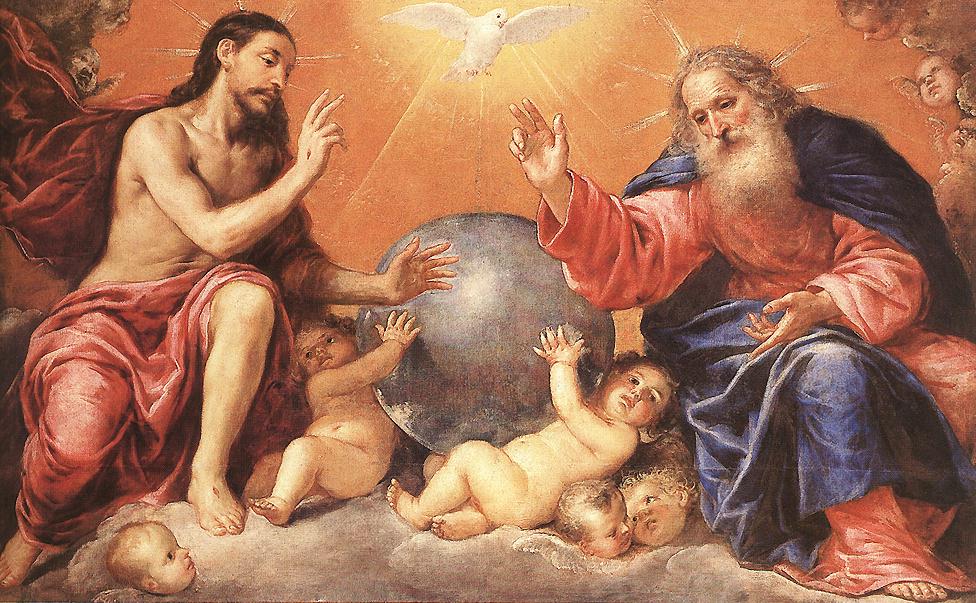This cantata was composed by Bach in 1726 and performed for the first time on Trinity Sunday (early June) of 1727. We have records of two additional performances later on, one in the early 1730’s and one in the 40’s.
However, in some ways Bach was looking back in time when he composed BWV 129. This is a “chorale cantata”, like the ones he had composed during his second Leipzig cycle in 1724-25. A chorale cantata is one composed based on a well-known Protestant hymn, according to a deep-seated tradition in Leipzig from well before Bach started at his post.
The mechanism to base the cantata on the hymn included procuring a libretto based on the original poem (usually first and last stanzas were included unchanged, and various degrees of paraphrasing occurred in middle sections), and from a musical perspective incorporating the hymn’s tune into the different movements in ways that were more or less apparent. Bach usually wrote large-scale choruses to open these works, very often giving the chorale tune to one of the voices in the choir. The closing movements were plain 4-part chorale settings where the hymn was very recognizable by the congregation. In the middle movements, there could be a variable degree of utilization of the chorale tune, or none at all.
Bach composed about 40 of these cantatas during his second year in Leipzig, starting with BWV 20 for the 1st Sunday after Trinity. We know that he intended to formalize an entire yearly cycle of them. However, he was not able to complete this project during that year, sometimes resorting to earlier cantatas or ones that did not follow the pattern. In later years, he composed a few chorale cantatas with the intention of completing the cycle by filling in the gaps.

BWV 129 is one of such later compositions, meant to replace Cantata 176, originally performed for Trinity Sunday in 1725.
In this case, there is no “adaptation” per-se of a libretto. Bach used, intact, a five-verse hymn by Johann Olearius, dating from 1665, which was very well suited to the feast of the Trinity: its first verse praises God, the second one the Son, the third the Holy Spirit, and the last two the Trinity as a whole. Each verse, except for the last one, opens with the same line – “Gelobet sei der Herr, mein Gott” (“Praised be the Lord, my God”).
Trinity Sunday was a festive occasion in Bach’s time, and we know what that means: a full band with 3 trumpets, timpani, woodwinds (flute and 2 oboes) and strings both open and close the cantata accompanying the 4-part choir. There are no recitatives – each of the inner stanzas is an aria, the first one for the bass just with continuo accompaniment, the second one for the soprano with flute and violin solos, and the third one for the alto with oboe d’amore.
As expected in a chorale cantata, the opening movement gives the chorale tune to one of the voices of the choir, in this case the sopranos. After the high-energy, vibrant instrumental opening, the sopranos take the lead and start their declamation of the hymn with the chorale tune in long notes, while the rest of the choir joins in with the instruments on the animated, fast-moving motifs illustrating praise and joy. The chorale tune does not appear in any other voices or instrumental lines.
The first aria, praising the Son, is scored simply for the bass and the continuo line. This simplicity highlights the beauty and inventiveness of the melody, with many of its motifs shared by the voice and the continuo in ritornello form.
The next aria is for the soprano, accompanied by flute, violin and continuo. An undulating motif (maybe symbolizing the Holy Spirit?) is shared among the three instruments, enveloping and, per the text, “providing comfort” to the believer, represented by the singer.
The alto aria that follows is accompanied by an oboe d’amore and continuo, and praises the Holy Trinity, a fact that could have suggested to Bach the use of a triple rhythm and three melodic lines. There is a notable moment when the text enunciates the integration of the Trinity (“Gott Vater, Gott der Sohn und Gott der Heilge Geist”) and the three parts join in unison.
The final movement rounds off the cantata in the most festive way, bringing back the entire orchestra which punctuates with joyful interludes the lines of the homophonic chorale sung by the voices, with the tune on the soprano line. The trumpets, in particular, have a much more prevalent role here than they did in the opening movement.
